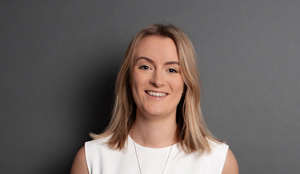Harnessing the power of your beauty brand: tips for safeguarding your Intellectual Property
Behind every successful brand, there is a robust and comprehensive brand protection strategy. Whether you’re taking your first steps into business or you’re an established beauty brand with plans to expand internationally or diversify your offering, securing the relevant IP (Intellectual Property) rights adds value to your business and should be seen as a long-term investment for future growth.
IP 101: THE BASICS
Trade marks function as a badge of origin – you can protect your company name, product range names or your company logo, but you’ll struggle to protect your marketing slogan or tagline. Trade mark applications are tailored to cover a specific range of goods or services and can be relied on to prevent others using your brand (or something similar) in relation to identical or similar goods and services.
Design registrations essentially protect the shape and appearance of products or the GUI of an app. They are an important tool in preventing others piggybacking off your success.
Your international footprint
Whilst retail is a truly global industry, trade mark and design rights are territorial. Identify where you want to target your business and draw up a list of key markets you intend to reach immediately. Consider your plans for launch, your short-term (1-2 year) growth and your longer-term expansion plans.
Secure protection in the essential territories first. Consider strategy around launch and whether your brand or product needs to be kept secret before then. There are easy ways to achieve this, like filing in the name of a shell company, or deferring publication of your design.
Defining your proposition
What is your core business offering? Which products do you intend to sell to consumers in the next 5 years and/or which services will you offer? What would you be most bothered about someone else doing?
For trade marks you need to create a list of all relevant products and services. For designs you need to obtain clear and accurate line drawings of what you want to protect. You can’t retrospectively amend an application, so anything you’ve missed would need to go into a new application, driving up cost. An IP lawyer or trade mark attorney can help you to help decide what needs to be covered.
Clearance checks
Once you’ve defined the relevant geographical scope and your business proposition, it is essential to check whether your brand name, logo or the design of your product can be used without risk of infringement.
Clearance searches look for identical and similar marks which have been registered in relation to the relevant goods or services. Design clearance searches are more complex, but essentially look for designs which create the same overall impression to your product.
Clearance searches should also check for unregistered rights: these do not appear on any register and are generated as a result of trade. If you’ve done your market research, you’re likely to have a good idea who your key competitors are. This insight is invaluable to any lawyer or attorney assisting with a clearance search.
The risky alternative
A lot of brands question why they need to bother. Surely a quick search online will show you what you need to know?
Sadly not. Checking the availability of a domain name is important but just because a domain is available doesn’t eliminate infringement risk. Similarly, online searches alone cannot provide the clarity you really need.
Clearance checks help us to identify infringement risk – companies or individuals with pre-existing rights may be able to bring proceedings and seek an injunction to remove your products from the market, meaning loss of revenue & destruction of stock. You might also need to pay damages and their legal costs on top of your own. Even if you’re not threatened with an infringement, investors will almost certainly question whether you undertook adequate due diligence on the brand before agreeing to fund. Rebranding triggers significant expense and jeopardises all earlier investment in building consumer loyalty.
Secure your rights
Provided the brand is cleared for use, it’s time to file your applications and secure the registrations. Act quickly as your rights run from the filing date of any application.
The time it takes for your mark or design to achieve registration depends on where you have filed, whether the Registry raises any concerns and if any third parties oppose your application(s). Having a good relationship with an IP lawyer will help smooth the process out, as they will be experienced in dealing with those issues quickly and efficiently.
Even if you’re already a few years into trading, reviewing your protection and checking whether it still aligns with your business strategy is important. You might find you need to file some new applications to top-up your protection to cover a re-brand, product extension or expansion into new territories.
This article was originally published on theredtree.co.uk




